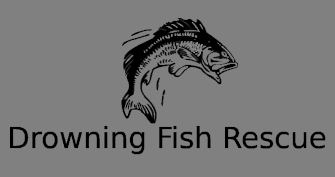Fishing for Panfish with a Hair Jig: Tips and Techniques
Introduction to Panfish Fishing
Panfish, including species like bluegill, crappie, and perch, are a favorite among anglers for their abundance, willingness to bite, and delicious taste. Fishing for panfish with a hair jig is an effective and exciting method that combines finesse and versatility. This article explores the ins and outs of using hair jigs to catch panfish, offering practical tips, gear recommendations, and techniques to elevate your fishing game.
What is a Hair Jig?
A hair jig is a lightweight lure typically made with natural or synthetic hair materials, such as bucktail, marabou, or craft fur, tied onto a small jig head. These jigs range in weight from 1/32 to 1/8 ounce, making them ideal for targeting panfish in shallow waters. The hair creates a lifelike movement in the water, mimicking small baitfish or insects, which triggers aggressive strikes from panfish.
Why Use a Hair Jig for Panfish?
Hair jigs offer several advantages for panfish fishing:
- Realistic Movement: The hair pulsates and flows naturally, attracting panfish even in clear water.
- Versatility: Hair jigs can be fished at various depths and speeds, adapting to different conditions.
- Durability: Unlike soft plastics, hair jigs withstand multiple catches without tearing.
- Customizability: Anglers can trim or color hair jigs to match local forage.
Choosing the Right Hair Jig
Selecting the perfect hair jig involves considering size, color, and material:
- Size: For panfish, stick to jigs between 1/32 and 1/16 ounce. Smaller jigs are less intimidating to bluegill, while slightly larger ones attract crappie.
- Color: Natural colors like white, brown, or black work well in clear water, while brighter colors like chartreuse or pink excel in stained water.
- Material: Bucktail provides a subtle action, while marabou offers a more pronounced, flowing motion.
Popular brands like Northland Tackle and Leland’s Lures offer high-quality hair jigs tailored for panfish.
Gear for Hair Jig Fishing
To maximize success, use the following gear:
- Rod: A 5.5- to 7-foot ultralight spinning rod with a fast action tip for sensitivity.
- Reel: A small spinning reel (size 1000-2000) with a smooth drag system.
- Line: 2- to 4-pound test monofilament or fluorocarbon for finesse presentations. Braid (4-6 lb) with a fluorocarbon leader works for longer casts.
- Accessories: Carry a small tackle box with various jig sizes, scissors for trimming hair, and a pair of pliers for hook removal.
Techniques for Fishing with a Hair Jig
Mastering hair jig fishing requires experimenting with different retrieves and presentations:
1. Slow and Steady Retrieve
Cast the jig near structure like docks or weed beds, then reel slowly to keep it just above the bottom. This mimics a small baitfish, enticing curious panfish.
2. Jigging Motion
After casting, let the jig sink, then gently twitch the rod tip to create a darting action. Pause occasionally to let the jig flutter, which often triggers strikes.
3. Swim and Pause
Retrieve the jig with short, steady pulls, pausing every few feet. The pause mimics a wounded baitfish, a favorite target for panfish.
4. Vertical Jigging
In deeper water, drop the jig straight down and jig it vertically. This is highly effective for crappie suspended around brush piles.
Best Times and Places to Fish
Panfish are active year-round, but spring and early summer are prime seasons as they spawn in shallow waters. Look for them around:
- Weed beds and lily pads
- Submerged logs and brush piles
- Docks and piers
- Shallow bays with sandy or gravel bottoms
Early morning and late afternoon are ideal times, as panfish feed actively during low-light conditions.
Tips for Success
- Match the Hatch: Observe local baitfish or insects and choose a jig that mimics their size and color.
- Stay Stealthy: Panfish are skittish in clear water, so approach quietly and avoid loud noises.
- Use Scent: Adding a drop of fish attractant to the jig can increase bites.
- Experiment: If one retrieve isn’t working, switch to another or change jig colors.
Conclusion
Fishing for panfish with a hair jig is a rewarding and accessible way to enjoy time on the water. With the right gear, techniques, and a bit of patience, you’ll be reeling in bluegill, crappie, and perch in no time. Whether you’re a beginner or a seasoned angler, hair jigs offer a versatile and effective approach to panfish fishing. Grab your rod, tie on a hair jig, and head to your favorite lake for an unforgettable fishing adventure!
